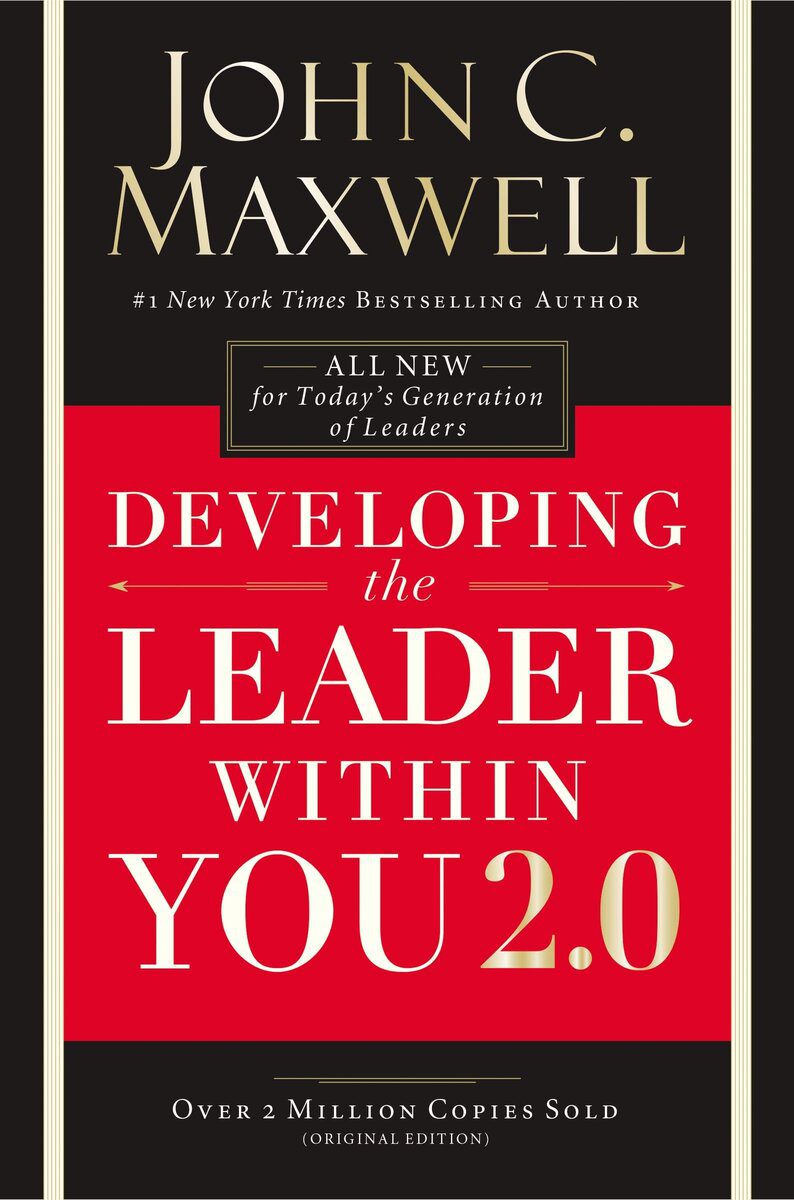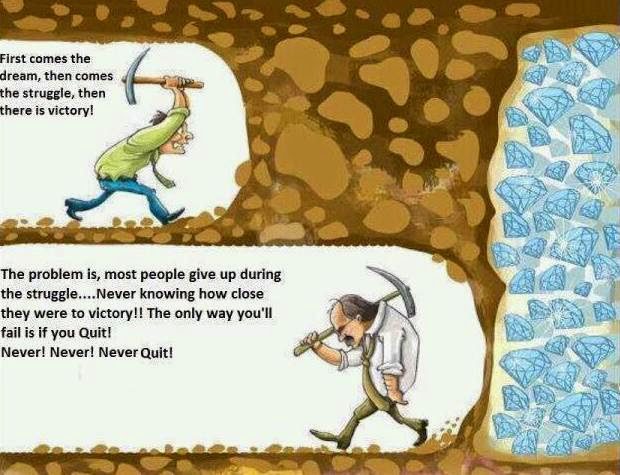Leadership is like maturity. It doesn’t automatically come with age. Sometimes age comes alone.
Print | Kindle (eBook) | Audiobook
John C. Maxwell is my favorite Leadership Author and I like reading his books because they are always well researched, with very good stories, anecdotes, and book references that would make you want to explore the topic further. In Developing the Leader Within You 2.0, John outlines principles for inspiring, motivating, and influencing others from any type of leadership position.
Everything rises and falls on leadership. The world becomes a better place when people become better leaders. Developing yourself to become the leader you have the potential to be will change everything for you.
Success leads to the greatest failure, which is pride. Failure leads to the greatest success, which is humility and learning.
In order to fulfill yourself, you have to forget yourself. In order to find yourself, you have to lose yourself.…That may lead to failure, but it will eventually lead to genuine success. – David Brook
Here are my favorite takeaways from reading Developing the Leader Within You 2.0 by John C. Maxwell:
The book is divided into 10 sections
1. The Definition of Leadership: Influence
2. The Key to Leadership: Priorities
3. The Foundation of Leadership: Character
4. The Ultimate Test of Leadership: Creating Positive Change
5. The Quickest Way to Gain Leadership: Problem Solving
6. The Extra Plus in Leadership: Attitude
7. The Heart of Leadership: Serving People
8. The Indispensable Quality of Leadership: Vision
9. The Price Tag of Leadership: Self-Discipline
10. The Expansion of Leadership: Personal Growth
The Definition of Leadership: Influence
“He who thinketh he leadeth and hath no one following him is only taking a walk.”
Leadership is influence nothing more, nothing less. Anyone—for good or ill—who gets others to follow is a leader. That means Hitler was a leader. (Did you know that Time named Hitler their Man of the Year in 1938 because he had greater influence on the world than anyone else?) Osama bin Laden was a leader. Jesus of Nazareth was a leader. So was Joan of Arc. Abraham Lincoln, Winston Churchill, Martin Luther King Jr., and John F. Kennedy were leaders. While the value systems, abilities, and goals of all these people were vastly different, each of them attracted followers. They all had influence.
Did you know that Time named Hitler their Man of the Year in 1938 because he had greater influence on the world than anyone else?
Five Levels of Leadership
Level 1: Position—Influence Based on Rights.
- Position represents leadership before a leader has developed any real influence with the people being led.
- People who have been appointed to a position may have authority, but that authority doesn’t exceed their job description. Positional leaders have certain rights. They have the right to enforce the rules. They have the right to tell people to do their jobs. They have the right to use whatever power they have been granted.
“Position is a good place to start in leadership, but it’s a terrible place to stay.”
Level 2: Permission—Influence Based on Relationship
- Permission is characterized by good relationships. The motto on this level could be written as “People don’t care how much you know until they know how much you care.” True influence begins with the heart, not the head. It flourishes through personal connections, not rules and regulations.
- On Level 2, as you connect with people, build relationships with them, and earn their trust, you begin to develop real influence with them. That makes you want to work together more. It makes you more cooperative with one another. It makes the environment more positive. It boosts everyone’s energy. And in work settings, people stay longer and work harder.
People don’t care how much you know until they know how much you care.
Level 3: Production—Influence Based on Results
- On Level 3, people get things done. And they help the members of their team get things done. Together they produce results. That’s when good things really begin to happen for the organization. Productivity goes up. People reach goals. Profit increases. Morale becomes high. Turnover becomes low. Team loyalty increases.
Level 4: People Development—Influence Based on Reproduction
- On Level 1, the team member has to follow the leader. On Level 2, the team member wants to follow the leader. On Level 3, the team member appreciates and admires the leader because of what he or she has done for the team.
- On Level 4, the team member becomes loyal to the leader because of what the leader has done for him or her personally. You win people’s hearts and minds by helping them grow personally.
If you don’t believe in the messenger, you won’t believe the message. —JAMES M. KOUZES AND BARRY Z. POSNER
Level 5: Pinnacle—Influence Based on Respect
- People at the Pinnacle level are known not only outside of their own organizations, but outside of their fields, their countries, and even their lifetimes. For example, Jack Welch is a Level 5 leader in business. Nelson Mandela was a Level 5 leader in government. Martin Luther King Jr. was a Level 5 leader among social activists. Leonardo da Vinci was a Level 5 leader in the arts and engineering. Aristotle was a Level 5 leader in education and philosophy.
The Key to Leadership: Priorities
“Time cannot and will not be managed, and you will never get more of it. The problem is rooted in the choices you are making with others and your own choices. You choose how to use it every moment of every day, whether you believe you do or not.” – Coach and speaker Jamie Cornell
Good leaders always think ahead and prioritize their responsibilities. It’s been said that
• Practical people know how to get what they want.
• Philosophers know what they ought to want.
• Leaders know how to get what they ought to want.
“Effective leaders weigh both factors for each task and act accordingly. Here’s how:
• High Importance/High Urgency: Tackle these tasks first.
– High Importance/Low Urgency: Set deadlines for completion and fit these tasks into your daily routine.
• Low Importance/High Urgency: Find quick, efficient ways to get these tasks done with minimal personal involvement and time. If possible, delegate them.
• Low Importance/Low Urgency: If these tasks can be eliminated, then get rid of them. If they can be delegated, then find someone to do them. If you must do them, then schedule a one-hour block every week to chip away at them, but never schedule them during your prime time.
There are two things that are most difficult to get people to do: to think and to do things in order of importance.
The Foundation of Leadership: Character
Pope Francis’s 15 Diseases of Leadership
1. Thinking we are immortal, immune, or downright indispensable—which is the enemy of humility and service.
- Excessive busyness—which leads to stress and agitation.
- Mental and [emotional] “petrification”—which creates heartlessness.
- Excessive planning and functionalism—which leads to inflexibility.
- Poor coordination—which fosters independence and lack of cooperation.
- “Leadership Alzheimer’s disease”—where leaders forget who nurtured and mentored them.
- Rivalry and vainglory—where titles and perks become leaders’ primary focus.
- Existential schizophrenia—where leaders live hypocritical double lives.
- Gossiping, grumbling, and backbiting—where cowardly leaders speak ill of others behind their backs.
- Idolizing superiors—where leaders honor superiors to gain favor and get ahead.
- Indifference to others—where leaders think only of themselves.
- Downcast faces—where leaders treat their “inferiors” with sour severity.
- Hoarding—which involves accumulating material goods to seek security.
- Closed circles—where leaders place their clique ahead of shared identity and cooperation.
- Extravagance and self-exhibition—where leaders seek greater power and recognition
The Ultimate Test of Leadership: Creating Positive Change
People do not naturally resist change; they resist being changed.
To adapt with change, you need to Plan Ahead:
Predetermine the change that is needed.
Layout your steps.
Adjust your priorities.
Notify key people.
Allow time for acceptance.
Head into action.
Expect problems.
Always point to the successes.
Daily review your progress.
As a leader, you carry the responsibility for reviewing what your team does and looking for what needs to be changed.
• If you’ve done something for one year—look at it carefully.
• If you’ve done it for two years—look at it with suspicion.
• If you’ve done it for five years—stop looking at it and do something to change it.
To improve is to change, so to be perfect is to have changed often. – Winston Churchill
The Quickest Way to Gain Leadership: Problem Solving
Many of the significant accomplishments in human history occurred in the face of problems:
Florence Nightingale, too ill to move from her bed, reorganized the hospitals of England. Semi-paralyzed and under constant menace of apoplexy, Pasteur was tireless in his attack on disease. During the greater part of his life, American historian Francis Parkman suffered so acutely that he could not work for more than five minutes at a time. His eyesight was so wretched that he could scrawl only a few gigantic words on a manuscript, but he contrived to write twenty magnificent volumes of history.
The Extra Plus in Leadership: Attitude
People do one of three things when they fail:
• They resolve not to make a mistake again—that’s foolish.
• They allow their mistakes to make cowards of them—that’s fatal.
• They develop the security to learn from their mistakes—that’s fruitful
“A mistake is only a failure if you don’t learn from it.—ROLAND NIEDNAGEL
Formula for becoming an overnight success.
You show up every day.
You work hard.
You try new things.
You fail.
You improve.
You grow.
You face countless challenges and rejections.
You doubt yourself.
You want to quit.
But you don’t.
And you do it all over again and again.
Do this for months, years, or even decades, and you can become an “overnight” success.”
The Indispensable Quality of Leadership: Vision
Helen Keller, when asked what would be worse than being born blind, answered, “To have sight without vision.“
When it comes to vision, there are four kinds of people that leaders encounter:
• People who never see it—they are wanderers.
• People who see it but never pursue it on their own—they are followers.
• People who see it and pursue it—they are achievers.
• People who see it, pursue it, and help others see and pursue it—they are leaders.
We all live under the same sky but we don’t all have the same horizon.—KONRAD ADENAUER
All the best in your quest to get better. Don’t Settle: Live with Passion.
Order on Amazon: Print | Kindle (eBook) | Audiobook



2 Comments
Pingback: 100 Books Reading Challenge 2020 – Lanre Dahunsi
Pingback: John C. Maxwell on Leadership. – Lanre Dahunsi